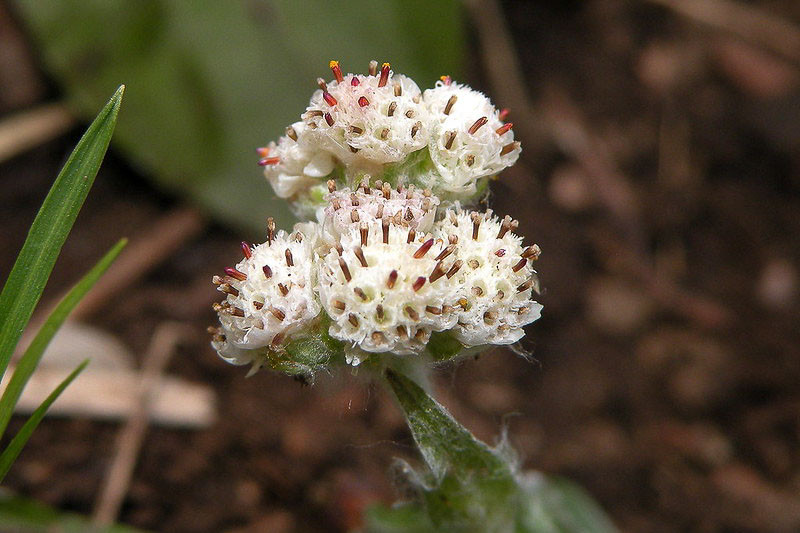Antennaria (Pussytoes)
Antennaria, commonly known as pussytoes or cat’s foot, is a genus of herbaceous perennials that belong to the Asteraceae family. These plants are characterized by their low-growing, mat-forming habit, making them excellent ground covers. Antennaria species typically feature rosettes of basal leaves from which emerge flower stalks. The foliage is often silvery or gray-green, lending a soft texture to the plant. Some species spread via stolons or rhizomes, forming dense carpets that thrive even in challenging environments.
Hardiness: These plants are hardy and resilient, generally thriving in USDA hardiness zones 3 through 8. They are well-adapted to a range of climates and can tolerate cold temperatures, making them suitable for gardens in cooler regions. Antennaria plants prefer well-drained soil and can endure poor soil conditions, including rocky or sandy substrates. Their drought tolerance makes them an excellent choice for xeriscaping and low-water-use landscapes.
Flowers and Bloom Time: Antennaria produces small, everlasting flowers in the spring and early summer. The blooms are typically white, pink, or sometimes reddish, with a unique, fluffy appearance that resembles a cat’s paw – hence the common name pussytoes. The flowers are dioecious, meaning individual plants are either male or female. Female plants tend to have showier flowers and are often preferred in garden settings.
Uses: Due to their ground-covering habit, Antennaria species are ideal for rock gardens, borders, and alpine gardens. They can be used to fill spaces between stepping stones or in crevices of walls. These plants are also suitable for naturalizing in meadows or prairies and can be incorporated into wildlife gardens due to their appeal to pollinators.
Benefits: Antennaria plants offer several ecological benefits. They attract a variety of pollinators, including bees and butterflies, contributing to the health of the garden ecosystem. Their dense growth habit can help suppress weeds and prevent soil erosion. As low-maintenance plants that require minimal care and water, they are a sustainable choice for eco-friendly gardening practices.

